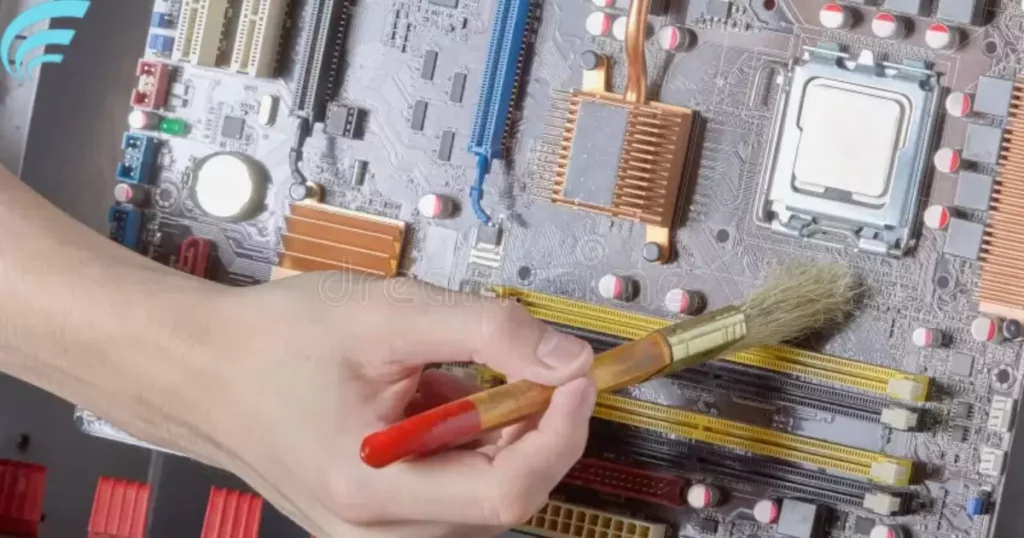When a GPU hits 70 degrees Celsius, it’s like saying it’s warm but perfectly normal. Think of it as your graphics card taking a comfortable stroll nothing to worry about. GPUs are designed to handle this temperature, ensuring smooth performance without overheating. So, if your GPU reaches 70 degrees, it’s just chilling within its safe operating range.
Ever wondered: Is 70 Celsius hot for a GPU? Dive into the world of graphics card temperatures and discover the ideal range for peak performance. Let’s unravel the mystery together and learn how to keep your GPU cool for an enhanced and worry-free computing experience. Ready to ensure your GPU stays in the sweet spot? Let’s find out.
A GPU hitting 70 degrees Celsius is like a cozy day for your graphics card. It’s within the safe zone, ensuring smooth operations without any need for concern. This temperature range is normal during gaming or heavy tasks, as GPUs are built to handle it. So, if your GPU hits 70 Celsius, it’s just doing its job comfortably.
Factors Affecting GPU Temperatures
Several factors influence GPU temperatures, including:
Workload
When your GPU is under heavy load, such as running demanding games or performing complex 3D rendering tasks, it generates more heat, causing the temperature to rise.
Cooling Solutions
The type of cooling solution your GPU has is crucial. Some GPUs come with elaborate cooling systems, while others rely on basic fans. The effectiveness of the cooling solution impacts temperature.
Ambient Temperature
The temperature of the room or environment where your PC is located can affect your GPU’s temperature. A hotter room may result in higher GPU temperatures.
Dust and Debris

Dust accumulation on your PC can obstruct airflow and heat dissipation, leading to higher temperatures. Regular cleaning is essential.
Optimal GPU Temperature
Imagine your GPU as a well-functioning machine. It thrives in an ideal temperature range of 60 to 80 degrees Celsius during demanding tasks. This is like the perfect working condition for your graphics card, ensuring it delivers optimal performance, especially when gaming or handling graphics-heavy applications.
Just like you wouldn’t want to be too hot or too cold, extremes affect GPUs too. Going beyond 80 degrees can lead to overheating, impacting performance, and potentially causing damage. On the flip side, being too cool (below 60 degrees) might mean your GPU isn’t working at its full potential.
Think of monitoring your GPU temperature as checking the thermostat for your graphics card. Use tools to keep an eye on the temperature and adjust settings if needed. This ensures your GPU operates in the Goldilocks zone, neither too hot nor too cool, delivering consistently smooth and optimal performance.
Monitoring GPU Temperature

GPU temperature is like your computer’s thermometer, measuring how hot or cool your graphics card is. It’s crucial for ensuring your GPU works smoothly and doesn’t get too hot, which can cause problems.
Monitoring GPU temperature is essential to prevent overheating. Just like you wouldn’t want to work in extreme temperatures, your GPU performs best when it stays within a safe range. Regularly checking the temperature ensures your computer runs efficiently, especially during demanding tasks like gaming or graphic design.
Special programs, like MSI Afterburner or GPU-Z, act as your GPU’s personal thermometer, answering the crucial question, Can Valorant Run Without a GPU? They help you keep an eye on the temperature, allowing you to take action if it starts getting too hot. Regular monitoring ensures your GPU stays cool and works optimally for a longer lifespan.
Cooling Solutions
If you find that your GPU consistently runs hot, you can consider various cooling solutions:
- Adding additional or more powerful fans to your PC case can improve airflow and help dissipate heat more effectively.
- Some manufacturers offer aftermarket cooling solutions that can be more efficient than stock coolers.
- Liquid cooling systems, while more complex to install, can provide superior cooling performance.
FAQs
Can a GPU handle 70 degrees Celsius without issues?
GPUs are designed to operate efficiently at this temperature, ensuring smooth performance without harm.
Does reaching 70 degrees Celsius indicate a problem with the GPU?
Not at all. 70 degrees Celsius is within the normal operating range for many GPUs during intense tasks like gaming.
Should I be concerned if my GPU consistently hits 70 degrees Celsius?
No need to worry. Consistent temperatures of 70 degrees are usually well within the safe limits for GPUs, maintaining optimal performance.
Are there ways to cool my GPU if it reaches 70 degrees Celsius?
Certainly, adding more airflow to your computer case or using an aftermarket cooler can help keep your GPU even cooler.
Can running my GPU at 70 degrees Celsius for long periods of time damage it?
Generally, no. GPUs are built to withstand prolonged operation at 70 degrees Celsius, ensuring durability and longevity.
Conclusion
In wrapping up, it’s clear that the question is, Is 70 Celsius hot for GPU? doesn’t warrant much concern. We’ve learned that GPUs are quite resilient, designed to operate efficiently within this temperature range during demanding tasks like gaming.
So, if your graphics card reaches 70 degrees Celsius, think of it as your GPU simply handling its workload comfortably. Understanding these temperatures helps demystify the sometimes puzzling world of computer components.
Remember, maintaining proper cooling solutions, such as good airflow or additional cooling methods, can further optimize your GPU’s performance. So, the next time you wonder about your GPU hitting 70 degrees Celsius, rest assured it’s well within the safe operating range, ensuring both a smooth gaming experience and the longevity of your graphics card.











